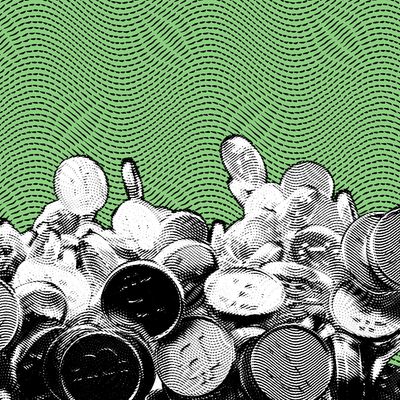
The past five weeks were great ones on Wall Street. Since the end of October, the Dow Jones Industrial Average went on a furious rally, climbing more than 11 percent. The bond markets — which, for much of the year, had been reflecting a darker image of the economy — gave up much of their pessimism about inflation and went on a frolic of their own. The thinking behind all this was that, finally, the Federal Reserve would start cutting interest rates soon, and it was better to buy, buy, buy just about everything that could be gotten before it was too late. But on Monday, with stocks faltering and bond markets starting to backtrack, the rally didn’t so much fizzle out as move elsewhere: to bitcoin and gold. The daily fluctuations at this point probably aren’t that important — what matters is that investors seem to be choosing to send as many assets as they can higher and higher: an all-of-the-above holiday rally to finally close out two years of economic misery. On Wall Street, it looks as though it’s finally — finally! — time to get greedy again.
On Monday, bitcoin touched $42,000, a price it hadn’t seen since the early stages of the crypto collapse in the spring of 2022. At the same time, an ounce of gold reached $2,100 — an all-time high. But why? As much as these two assets tend to be prized by an overlapping group of people who tend to worry about things like inflation and national debt and de-dollarization, the digital currency also tends to rise when speculation is rampant. For its part, gold is prized when there’s chaos, fear, and geopolitical turmoil — and there’s a bit of that happening right now.
The bitcoin rally is something of a fluke of timing. For the past year, the industry has been under a pall caused by last year’s calamitous blowups of FTX, Three Arrows Capital, and the many, many frauds that came to define the market. But the past few months have been something of a cleansing. Sam Bankman-Fried saw a swift conviction on seven counts of fraud, and Changpeng Zhao pleaded guilty to failing to prevent money laundering on his industry-leading exchange, Binance. Even the Winklevoss twins are fighting fraud charges against their exchange, Gemini. At around the same time, the Securities and Exchange Commission plotzed when it came to preventing a bitcoin exchange-traded fund — an investment that would make it easier for anyone to invest in the digital currency, from institutions to their 401(k) savers. To the crypto world, it feels like the bear market is over, or just about. The entire market is up to $1.6 trillion, about 50 percent higher than it was just a few months ago.
All that should make for a pretty optimistic time in crypto land, but what’s really adding gasoline to the speculation for everything from bitcoin to ten-year treasury bonds (which have seen a face-melting rally of their own in recent weeks) is the Fed. Jerome Powell, the central bank’s chairman, has recently failed to convince Wall Street that he will do anything but start cutting interest rates next year, likely beginning in March. And as the industry learned the hard way last year, interest rates appear to have a very direct relationship with the price of digital currencies: When money gets tight, people tend to sell their crypto and drop the speculative mania. But if rates are going to start falling soon, the opposite could very well be in the offing. As crypto journalist David Z. Morris pointed out, that could even bring back some of the bizarro-land shitcoin zaniness that defined the pandemic-era bubble.
This widely held view that the Fed is about to start cutting rates is also helping to drive the rise in gold prices. When the Fed starts cutting, the markets expect the value of the dollar to fall against other currencies — including gold. (Central banks own about 35,000 tons of gold, or about a fifth of the world’s total supply, according to the World Gold Council. Countries use the metal to help back the value of their currencies.) As the expectations of the Fed cutting rates became more widespread, the value of the dollar fell. What this means is that currency investors will likely start selling dollars rather than hoarding them to pay for things like oil or grain, and that could trigger further weakening in the currency. In other words, the absolute dominance of the U.S. dollar has made it increasingly valuable around the globe as rates shot up — and could have the opposite effect on the way down.
Of course, none of these things happen in a straight line. Later on Monday, the value of the dollar ticked up again, and gold fell a bit from its highs. But the dip was read by many observers as just standard volatility in the markets. “Investors are basically just digesting some of the recent gains,” Sam Stovall, chief investment strategist at CFRA Research, told CNBC. In other words, Wall Street is trying to make a nice profit before traders close their desks for the year and go on an extended ski vacation in the Alps.






























